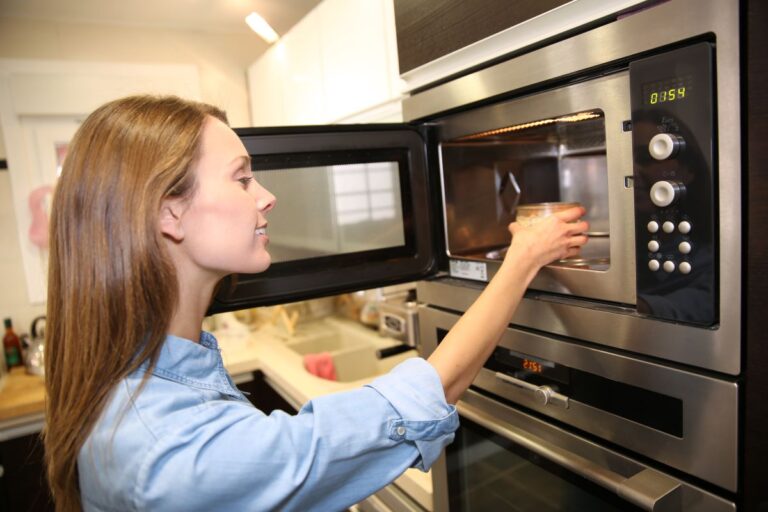The Truth About Meal Delivery Kits: Are They Worth It?
Meal delivery kits like HelloFresh, Blue Apron, and Sun Basket have gained massive popularity, often endorsed by celebrities such as Chrissy Teigen and Gwyneth Paltrow. But are they really worth the cost?
1. High Costs

Meal delivery kits are prohibitively expensive for what you get. HelloFresh, for instance, costs around $9 per serving. This can quickly add up compared to buying groceries yourself. A family of four could easily spend over $500 a month, which is far more than what it would cost to cook at home with fresh ingredients from your local grocery store.
2. Subscription Traps

Many meal kits operate on a subscription basis, trapping you into a weekly commitment. Forget to skip a week, and you could end up paying for meals you don’t need or want. Canceling these subscriptions can also be a hassle, with companies often making it difficult to stop your deliveries.
3. Environmental Impact

The environmental impact of meal kits is substantial. Blue Apron, for example, includes excessive packaging such as ice packs, plastic bags, and boxes, all of which lead to a significant amount of waste. This packaging is often non-recyclable, contributing to the growing problem of plastic pollution.
4. Portion Sizes

Portion sizes in meal kits can be inconsistent and often disappointing. Some users find that the portions are too small, leaving them hungry and unsatisfied. Considering the high price, it’s frustrating to pay for a meal that doesn’t fill you up.
5. Freshness Issues

Despite their promises, many meal kits have issues with freshness. Reports of ingredients arriving spoiled or not as fresh as expected are common. This can be a significant issue considering the premium price you pay for these kits. Who wants wilted lettuce or limp carrots for dinner?
6. Limited Dietary Options

While some services offer dietary customization, the options are often limited. Those with specific dietary needs may find it challenging to get meals that meet their requirements. Whether you’re vegan, gluten-free, or have other dietary restrictions, you might be disappointed by the lack of variety and accommodation.
7. Cooking Time

Meal kits often claim to save time, but the preparation can still be time-consuming. Following the provided recipes can take longer than expected, especially for novice cooks. The promise of a quick, easy meal often falls short when you’re spending 45 minutes to an hour in the kitchen.
8. Lack of Culinary Skill Development

Using meal kits means you rely on pre-measured ingredients and step-by-step recipes. This doesn’t help you develop your own cooking skills or creativity in the kitchen. Over time, you might find yourself dependent on these kits, unable to cook without them.
9. Repetition of Meals

Over time, meal kits can become repetitive. Many users report seeing the same meals offered frequently, leading to a lack of variety. Eating the same dishes week after week can quickly become boring and uninspiring.
10. High Calorie Counts

Some meal kits can be surprisingly high in calories. For example, a typical meal from HelloFresh can have over 800 calories, which might not fit into everyone’s dietary plans. If you’re watching your calorie intake, these kits might not be the best option.
11. Ingredient Quality

While many companies tout high-quality ingredients, this is not always consistent. Some users have reported receiving subpar produce or meats. Paying a premium price for low-quality ingredients is not only frustrating but also a waste of money.
12. Hidden Costs

Additional costs can add up quickly with meal kits. You might need to purchase extra ingredients not included in the kit or pay for delivery fees. These hidden costs can make an already expensive service even more costly.
13. Storage Space

Meal kits require significant fridge space. If you have a small refrigerator, storing several meal kits at once can be problematic. The bulky packaging and numerous components can quickly overwhelm your kitchen.
14. Endorsements and Marketing

Celebrity endorsements can be misleading. Stars like Chrissy Teigen and Gwyneth Paltrow promote these kits, but are they really eating this stuff daily? Their experiences might not reflect the average user’s reality, and their endorsements can create unrealistic expectations.
15. Nutritional Balance

Some meal kits may not offer a balanced nutritional profile. Meals can be carb-heavy or lack sufficient vegetables, which might not align with a balanced diet. If you’re looking for a nutritionally balanced meal, you might have to look elsewhere.
16. Dependency

Regular use of meal kits can lead to dependency, where you might struggle to cook meals from scratch without the pre-measured ingredients and recipes. This dependency can stifle your culinary creativity and self-sufficiency in the kitchen.
17. Long-Term Sustainability

The long-term sustainability of relying on meal kits is questionable. Over time, the financial and environmental costs might outweigh the convenience they offer. Considering the high costs and environmental impact, are meal kits truly a sustainable option for the future?
Are Meal Kits Truly Worth It?

While meal delivery kits offer convenience and can be a fun cooking experience, their high costs, environmental impact, and other downsides may not make them the best choice for everyone. Are you ready to reconsider your meal planning strategy?
Toxic Talk: 21 Phrases to Never Say to Your Kids

Are you worried about the impact of your words on your child’s well-being? Let’s tackle 21 phrases that might be causing more harm than you realize. Toxic Talk: 21 Phrases to Never Say to Your Kids
Breaking Ties: Recognizing When It’s Time to Go No-Contact with Parents

Deciding to go no-contact with a parent is a profound, often painful choice, but sometimes it’s necessary for personal well-being. Are you grappling with the decision to distance yourself from a toxic parental relationship? Breaking Ties: Recognizing When It’s Time to Go No-Contact with Parents
Stop the Stereotypes: 20 Gender-Based Comments Kids Don’t Need

It’s time to challenge traditional narratives that limit kids’ potential. Here are gender-specific phrases and ideas to avoid, fostering a supportive and open-minded environment for the next generation. Stop the Stereotypes: 20 Gender-Based Comments Kids Don’t Need
The post The Truth About Meal Delivery Kits: Are They Worth It for Families? first appeared on Peachy Fours.
Featured Image Credit: Shutterstock / popcorner.
For transparency, this content was partly developed with AI assistance and carefully curated by an experienced editor to be informative and ensure accuracy.







